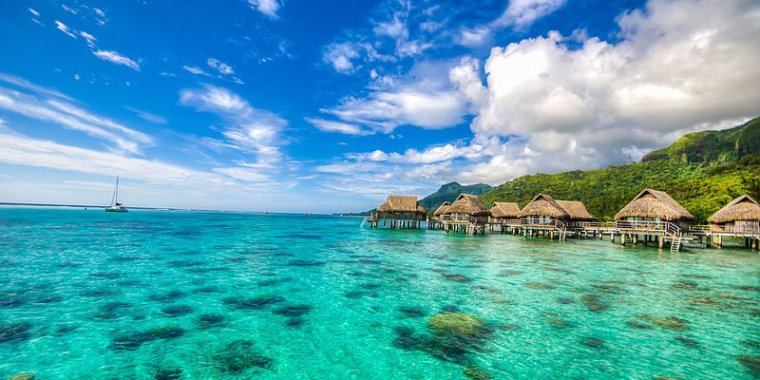| Published in Destinations |
Tahiti, French Polynesia
Tahiti is in the Society Islands, an archipelago which includes the islands of Bora Bora, Raiatea, Taha'a, Huahine and Moorea, and has a population of 127,000 people, about 83% of whom are of Polynesian ancestry. The legendary name 'Tahiti' not only identifies this island but also the group of islands that make up French Polynesia.
Tahiti is composed of two volcanic mountain ranges. In the shape of a 'turtle', it is made of Tahiti Nui (the larger part) and Tahiti Iti (the peninsula). The two islands are linked by the isthmus of Taravao and skirted by black beaches.
Towns
• Papeete is the capital, and the administrative centre. Once sleepy, today its harbour is busy with cargo freighters, copra ships, luxury liners and ocean-going yachts. There are cafes, shops overflowing with French fashions, shell jewellery and handicrafts and a wide variety of restaurants serving Tahitian, French, and Asian cuisine. Not an attractive city, there are many small shops selling black pearls, small goods, souvenirs. The marche draws many shoppers for local produce (including fish) or souvenirs. Popular cafe with wifi on second floor. Don't expect many stores to be open after 18:00. What is open are the food trucks by the harbour, some restaurants and bars, and lei vendors. Convenience stores a outside the city centre at service stations are open.
• Faa'a has the international airport built on the lagoon. Apart from the airlines check-in counters, there is an information counter, a snack bar, a restaurant and vehicle rental offices and shops. Nearby, in a special Tahitian-style house, artisans sell flower leis and shell necklaces. A fairly large, often grungy area. Home to a large mall, the Centre Commercial (i.e., the mall) south of the airport on the main highway and anchored by a Carrefour.
Climate
The climate is tropical. The average ambient temperature is 80°F (27°C) and the waters of the lagoons average 79°F (26°C) in the winter and 84°F (29°C) in the summer. But do not worry, most resorts and hotel rooms are air conditioned or cooled by ceiling fans.
Summer with a warmer and more humid climate is from November through April, and winter is from May to October, when the climate is slightly cooler and drier. When you step out of the airplane, you'll immediately notice that the air is warm and humid. Consequently, besides your camera and your extra memory cards, do not forget to pack lightweight cotton clothes, sunscreen lotion and a baseball cap or a wide brimmed hat. Synthetic fabrics can get hot and sticky in the tropics.
Get in
Tahiti is served by Faa'a International Airport (PPT), which is close to the main city of Papeete (Papy - et - tay). All international flights will land in Tahiti. The national airline carrier then operates flights to all of the other islands.
Just a little over 8 hours non-stop flying time from Los Angeles and 12 hours from New York, Tahiti is located halfway between the US and Australia.
Tahiti is regularly served by the following air carriers: Air Tahiti Nui, Air France, Air New Zealand, and LATAM. Expect to be greeted by a small band, ladies handing out flowers any time of the day or the night.
In case of a late arrival time, you will probably need to book accommodation that night unless you are part of a package group, as hotels typically don't permit very early check-ina.
Visas
Holders of a passport from the EU, and most countries of North or South America don't need to apply for a visa for a stay of up to one month. French Nationals only require a National Identity Card. However, the Delphine passport is necessary in case of transit via the USA.
Except for nationals of the European Union and aliens holding a 10-year residence card for metropolitan France, all foreigners entering French Polynesia must have a return ticket.
Get around
By bus
The most common form of transportation around Tahiti is "le Truck". It is a rickety public open-air bus with wooden passenger cabins that will stop on the side of the street and serve different cities. Prices are inexpensive, normally set around 100 to 200 CFP per person and most will end up in the centre close to the market. Other means of transportation include scooters or private cars. Most rental cars cost around 9,000 CFP per day. There is a multitude of bikes to rent cheaply. This is especially a good idea on Sundays as everything is closed so you may wish to explore the islands.
By boat
The ferry or catamaran will take you to Moorea and other adjacent islands. It now takes about half an hour by catamaran to go from Tahiti to Moorea.
Ferries (sometimes combined cargo and pax boats like the Aranui) travel between most islands. Catamarans and ferry boats cross between Tahiti and Moorea several times a day. Schooners and cargo boats serve all the inhabited islands from Papeete. Rotations vary according to the destinations: from three times a week to the Society Islands to once monthly to the Island of Mangareva.
Two cruise ships/luxury liners currently ply the islands: the Paul Gauguin, which does a regular 7-day trip around the Societies, with occasional trips out to the Tuamotus, Marquesas and Cook Islands; and the Tahitian Princess which does similar itineraries. A great way to see the islands, unless you're on a tight budget. The Bora Bora Cruises is a more intimate vessel based in the Leeward Islands. For more adventure, embark on the Aranui III.
By plane
Air Tahiti operates regular flights between 46 islands from Tahiti. It will take you about 10 minutes to go to the sister island of Tahiti, Moorea.
Air Moorea makes the short hop to Moorea several times daily. Charters flights such as Air Archipel are available on request. Helicopters are one other option.
Talk
French and Tahitian are the most spoken languages, but English is widely understood in the tourist areas, but not in less frequently visited areas (such as the remote islands of the Tuamotus). Most signs are in French, very few of them in Tahitian.
What to See in Tahiti
There are many things to do in Tahiti and a lot to see and take pictures of. Should you embark on a circle island trip (of around 70 miles/112 kilometres), some of the must see things would include:
• 'Le Marché'. This is the large two-story Papeete's market place where many things can be bought. Buy your lunch here and some "Monoi". "Monoi" is the local tahitian oil, strongly scented and worth a good price. It is used to get tanned and moisturize your skin. Also buy a "pareu". This is typical tahitian clothing that can be tied into many different ways (a cover-up, a dress, shorts, a shawl). It can also be spread out as a picnic cloth or a beach towel.
Created with traditional designs and bright tropical colors, they are inexpensive and make the perfect souvenir. This is especially good for getting to know Tahitians as every Tahitian knows how to tie one. Le Marche is also the place where you'll find jewellery as well as many calendars, postcards, cups... Ripe fruits, scented soaps, vanilla beans, dance costumes, wooven hats and bags and shell necklaces up to your ears are what you'll find in the market. It is centrally located and you can't miss it.
• The Arahoho blowhole on the North side of Tahiti Nui. An area where a blowhole in the shore has formed on the road and whose waves crash inside the rock cliff.
• Les Trois Cascades. Three beautiful waterfalls inside the island of Tahiti Nui. The path is presently closed by a rockfall, check with the tourist office on updates or chance going if you are close by. The pedestrian bridge is chained shut.
• Tomb of King Pomare the Fifth. The tomb of the only king of Tahiti, when it was a monarchy.
• Pointe Venus Lighthouse. Black sand beach and clear blue water by a fishing reef. Popular with young Tahitians.
• Botanical Garden/Gauguin Museum. At Papeari, on the west coast, the botanical garden made by Harrison Smith lies alongside the Gauguin Museum in the magical setting of the Motu Ovini.
• The Olivier-Breaud Golf Course. You can admire the wonderful layout of this golf course set in the magnificent Atimoana complex which was a sugar cane farmland rum in the 19th century.
• Arahurahu Marae. A restored religious site containing various stone block structures dedicated to the old gods and where important ceremonies used to take place.
• Museums. It is interesting to visit the Museum of Tahiti and the Islands which has a rich collection of very old pieces and reconstructed historical scenes. The Black pearl museum as well as the Gauguin museum are fun to see if you want to get out of the heat.
• To'ata. A square with small restaurants but also the place to be for the July celebrations with dance and traditional music, the Heiva I Tahiti.
What to Do in Tahiti
• All nautical activities: surfing, scuba diving, snorkeling (most resorts will provide you with the equipment for free), canyoning, stingray and shark feedings, water sports, deep sea fishing, kitesurfing. Use reputable dive company for diving, those with the far out websites are reportedly a bit low on ethics and safety, not well prepared and do not go far past the marina.
• On land you also have the possibility of for example hiking, 4WD safari and golf.
• Deep sea fishing has been curtailed on Tahiti and is difficult to find.
Buy
There are many of the shops around the centre near "Notre Dame".
If you are dreaming of a tattoo, those available in Tahiti have unique patterns which are said to reflect the spirit of the island. There are lots of places to get tattooed around Papeete including the market. You may also want to buy a black pearl, and available a good prices in the market .
Eat
Tipping is not a custom in Tahiti. It is beginning to be seen in some of the restaurants and hotels on the larger islands, but in general Tahitians do not expect your tip.
"Roulottes" (snack shops on wheels) are especially popular on Friday nights to get some great Chinese food, crepes, and French-style dishes. You won't miss it since it is located along Papeete's waterfront. Unbelievably delicious meals at bargain prices in a fun and local atmosphere. When possible eat here as a meal for two can cost 30 FPF, which is much less than a hotel meal (plus you get plenty of food).
The main island dish to try is the "poisson cru" ("raw fish" in French.) It is a fresh fish marinated with lime juice and coconut mixed with vegetables. Many varieties can be found all over including Poisson Cru Chinois (Chinese style), Poisson Cru Ananas (pineapple style). Parrotfish, ahi, mahi mahi, and other fresh fish are divine in a light sauce made from Tahitian vanilla and coconut milk. Do not miss the exotic tropical fruits.
Baguettes are found all over the island at a very reasonable price. As well as baguettes, Tahitians have created the "baguette sandwich" where everything from fish to french fries are stuffed into.
Make sure you also try the very popular Chinese ma'a tinito (which is a mixture of pork, kidney beans, Chinese cabbage and macaroni.)
Family occasions and celebrations are the time for a huge tamara'a Tahiti (Tahitian-style feasts) where a meal consisting of suckling pig, fish, breadfruit, yams and fe'i bananas is wrapped in banana leaves and steamed in an earth-dug oven over layers of hot rocks.
If you are looking for fine dining try Paea south of Papeete to Chez Remy or Le Carre at Le Meridien. Pricey, but fantastic meals, large French menu and best wine and drinks selection, and very friendly, relaxed staff who also spoke perfect English. The Papaya dessert is delicious. US$28–45 pp. The Italian restaurant near the Le Meridien entrance is also good, especially stone oven baked pizza and the Anchovie-Caper-Olive Spaghetti.
Tips: get French creamed cheese at breakfast on your crepes.
Also, plan for your meals. Many restaurants don't open until 19:00. Some of the hotels have multiple restaurants that serve different menus at different times of the day, and changes by day, which made for limited selections and inability to order something you saw the day before. Some restaurants and businesses on the island close from 12:00-13:00, some until 15:00, which can make shopping and eating on a whim difficult.
Drink
Bottles of water are readily available. Being a French territory, wine is common and easy to find. As this is a tropical island, a multitude of fruit juices from pineapple juice to coconut milk are to be found everywhere. It is sometimes better to crack open your own coconut yourself and drain it for lunch. If you're a fan of beer, the Hinano Beer will be one to taste, and perhaps bring a few cans home.
Music and dancing tell the story of the Tahitian people. Most hotels feature evening entertainment. Club dancing is also available in downtown Papeete but close at 03:00. You will probably not even get out that late, so tired that you will be from spending so much time in the sun discovering the island.
Sleep
Accommodation in Tahiti can run from the most luxurious 5-star hotels like The Brando Resort or Tahiti Intercontinental, with overwater bungalows, a bar, a pool, to small family pensions. Bring insect repellent if you're staying in a pension. Much of the accommodation in Tahiti is of older style from the early 1970s.
Several international groups are present: InterContinental, Sofitel, Novotel, Le Meridien, Starwood-Sheraton, Orient Express, Club Med and Radisson. Two local chains, Maitai and South Pacific Management, complete the hotel scene. Although complying with international standards, the overwater bungalows are decorated in Polynesian-style with the use of pandanus, bamboo and shell light fixtures.
Some bungalows are fitted with glass-bottomed tables for watching the fishes without ever getting your feet wet. The Radisson is quite a way from the airport and is perfect if you want to relax, but makes getting into town difficult (either a limited hotel shuttle or an expensive taxi ride).
Family hotels are ideal for travellers preferring both simplicity and local experience. Family hotels are divided into four categories:
• Bed and Breakfast: furnished bungalows limited to four dwelling units per home and able to accommodate twelve persons, equipped with bathrooms either private or shared.
• Holiday family homes: furnished bungalows limited to nine dwelling units and able to accommodate twenty-seven persons, equipped with bathrooms and kitchenette.
• Family-run guest houses: same as the above + breakfast and dinner service.
• Family hotels: offers full board meal service and à la carte food menu.
Stay outside of Papeete if you want a quieter, more pleasant smelling experience. Traffic is heavy in Papeete and so is the smell of it.
Connect
Many resorts have business centres from where you can have high-speed Internet access. Papeete's Central Post Office is open weekdays from 07:30 to 11:30 and from 13:00 to 17:00 or 18:00. Saturdays from 07:30 to 11:30.
Stay safe
Tahiti has one of the lowest crime rates within France and its territories. However, petty crime, such as pickpocketing and purse snatching occurs.
Medical treatment is generally good. Two major hospitals as well as several private clinics provide 24-hour medical service.
As an overseas territory of France, defence and law enforcement are provided by the French Forces (Army, Navy, Air Force) and Gendarmerie.
Be sure to bring jelly-type sandals for walking amidst coral in the water and along the beaches or either old sneakers so you don't cut your feet on the coral or don't step on a stonefish.
Encounters with sharks in the lagoon will be most likely when scuba diving or even snorkeling but they are totally inoffensive. So are stingrays. However, be aware of moray eels which hide deep in the corals and whose bite can cause serious injury.
No vaccines are required.
Go next
People often know about Tahiti and Bora Bora but the following are other wonderful islands that should absolutely be visited:
• Moorea
• Maupiti
• Tetiaroa
• Huahine
• Raiatea
• Taha'a
• Fakarava
• Nuku Hiva
• Rangiroa
• Manihi
• Tikehau
You can also take a direct flight to spectacular Easter Island - Tahiti is the only place in the world apart from Santiago de Chile where you can do this. (Wikivoyage)
See also Tahiti in Pictures
YOU MAY ALSO LIKE

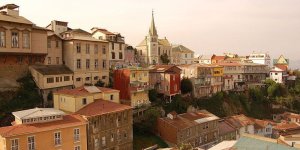
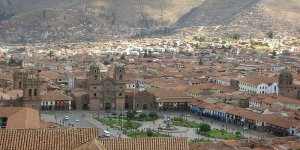
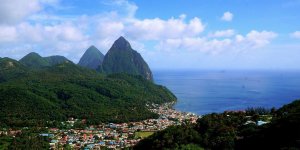
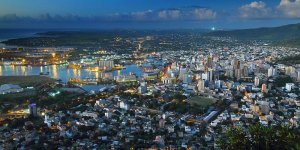
 If you own or manage a travel-related business such as a hotel, a bed-and-breakfast, a restaurant, a pub or a cafeteria, you can create a web page for your business for free on Titi Tudorancea Travel Info. » |
